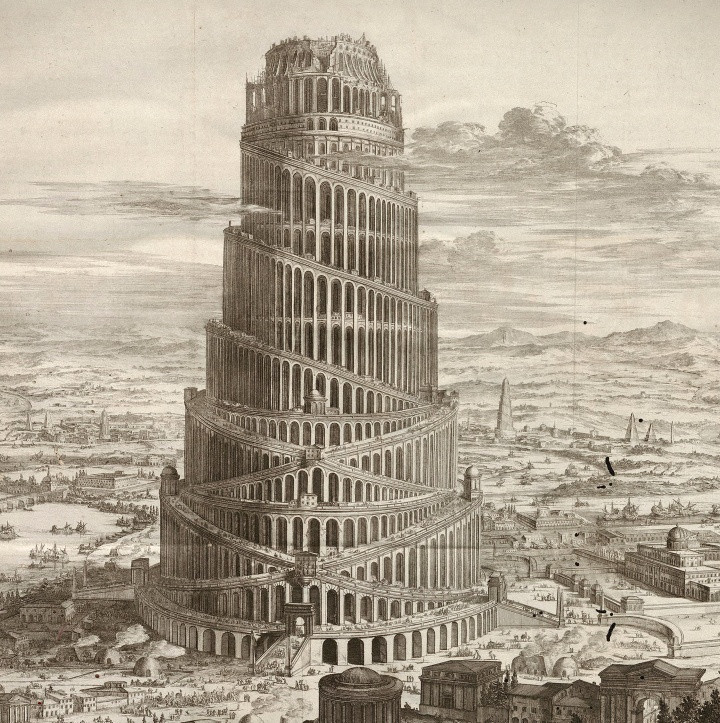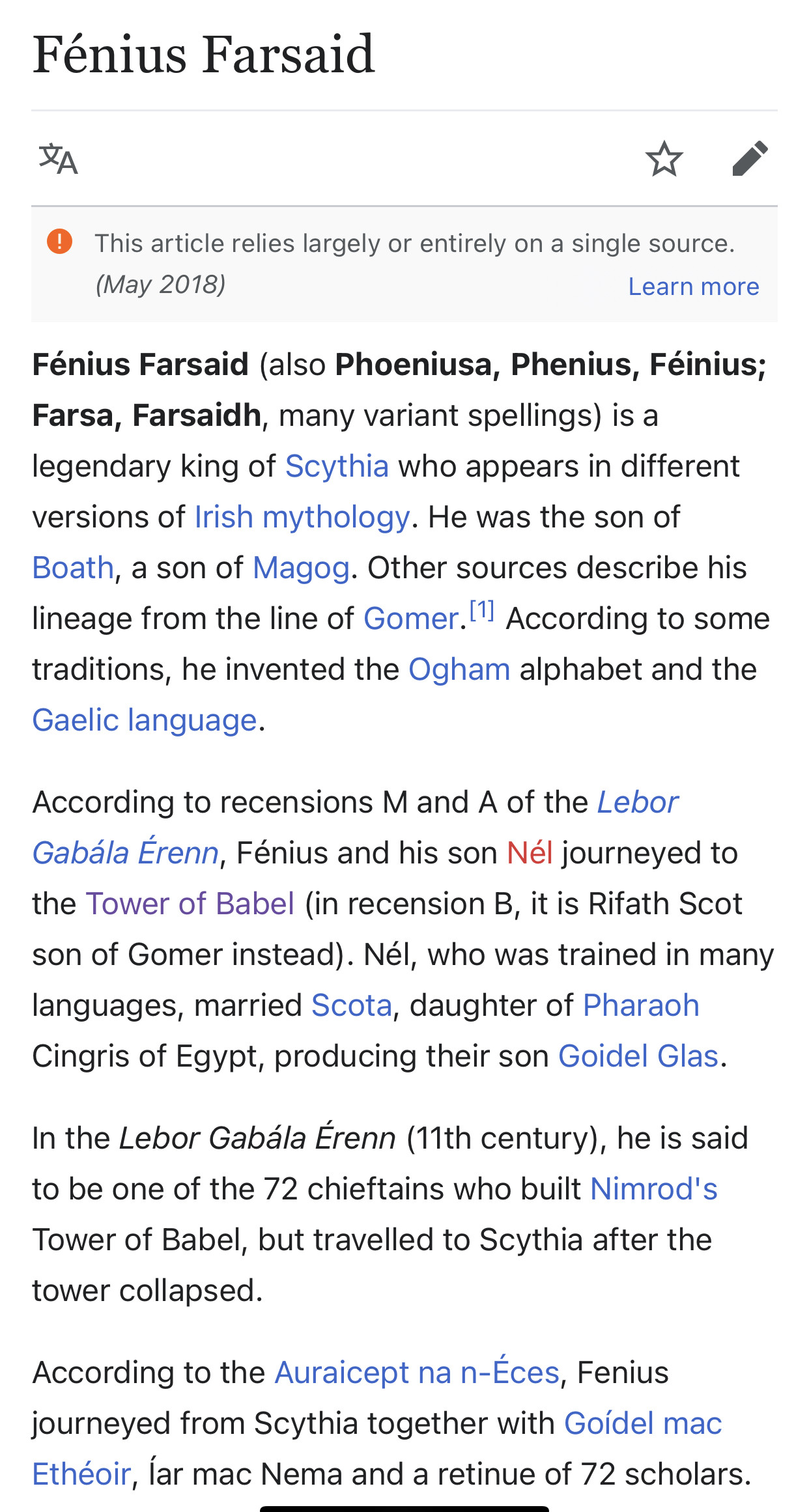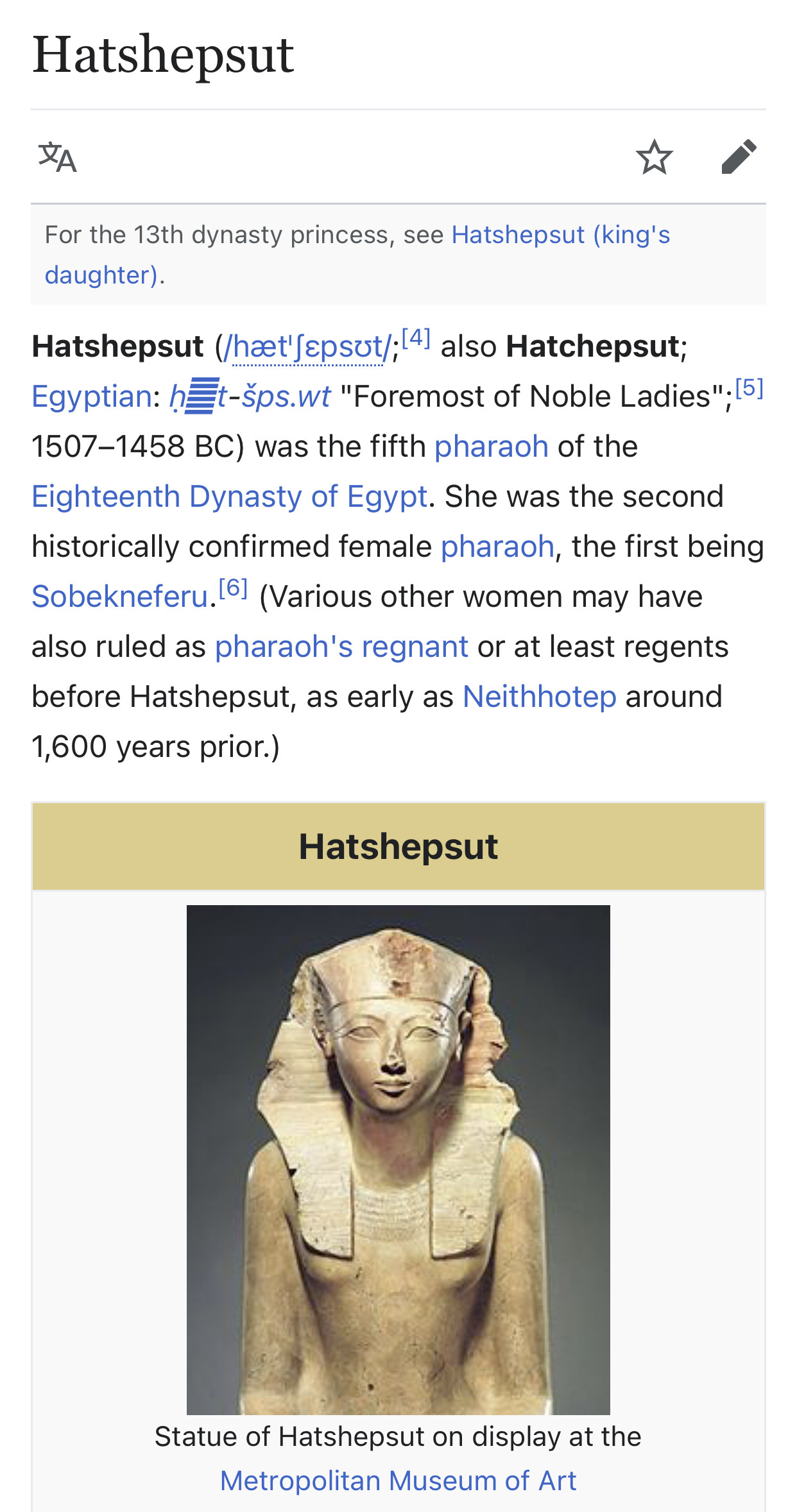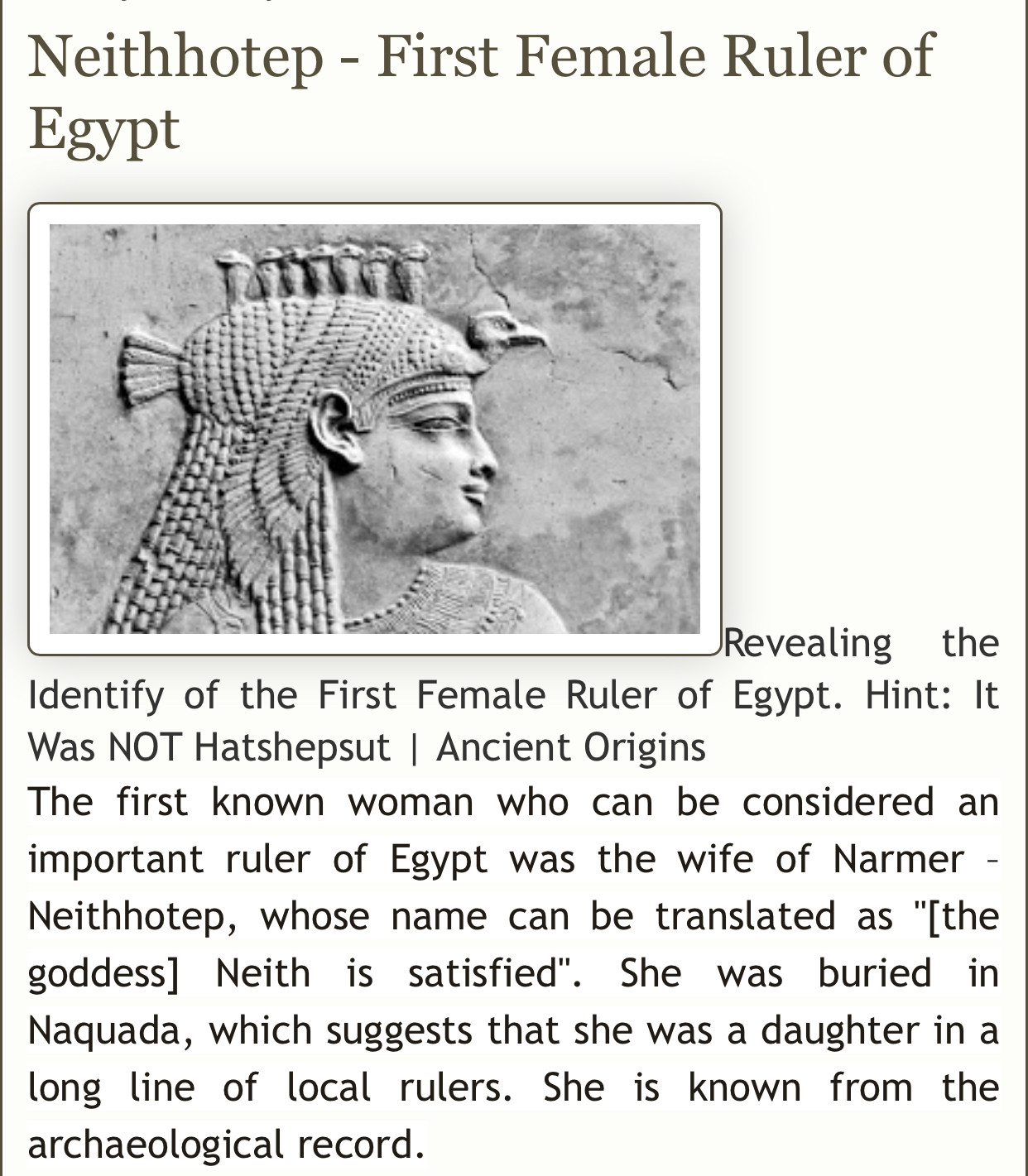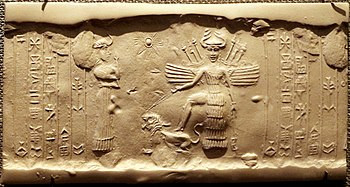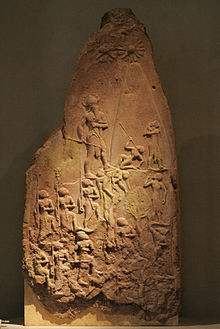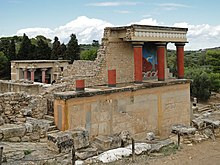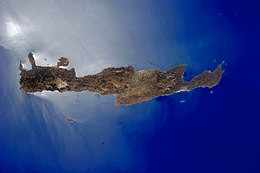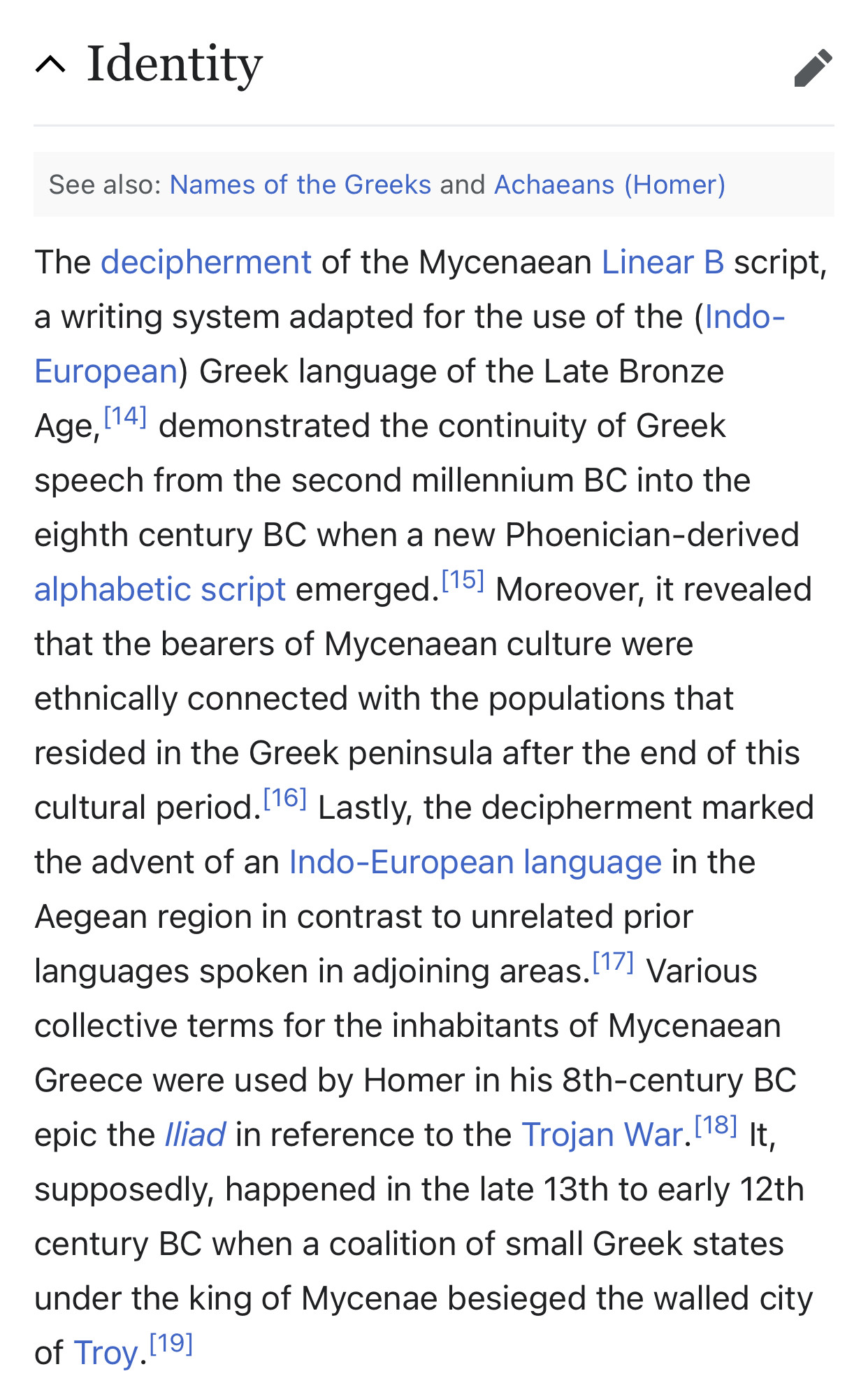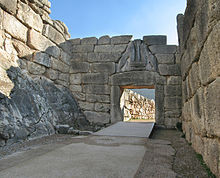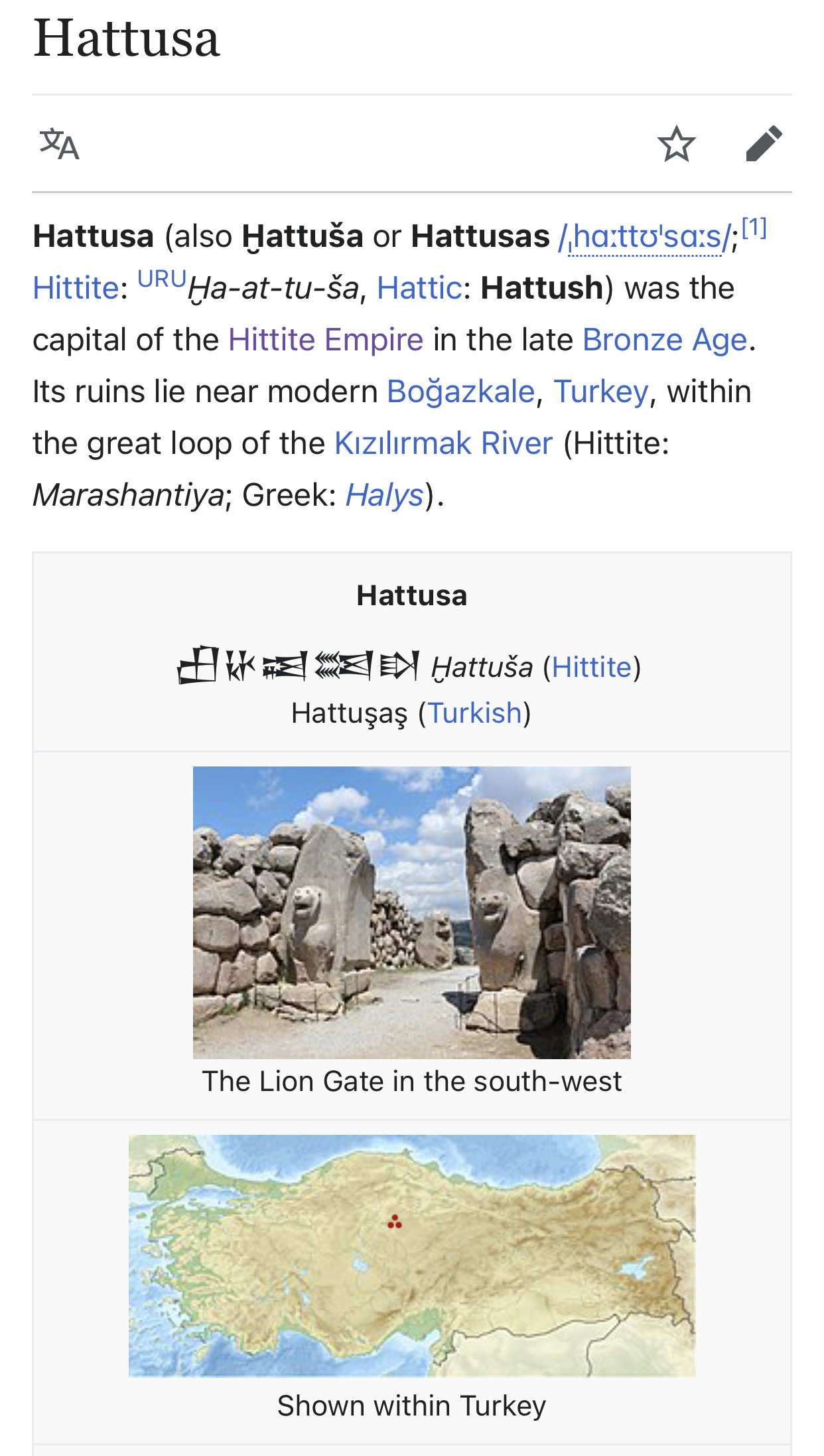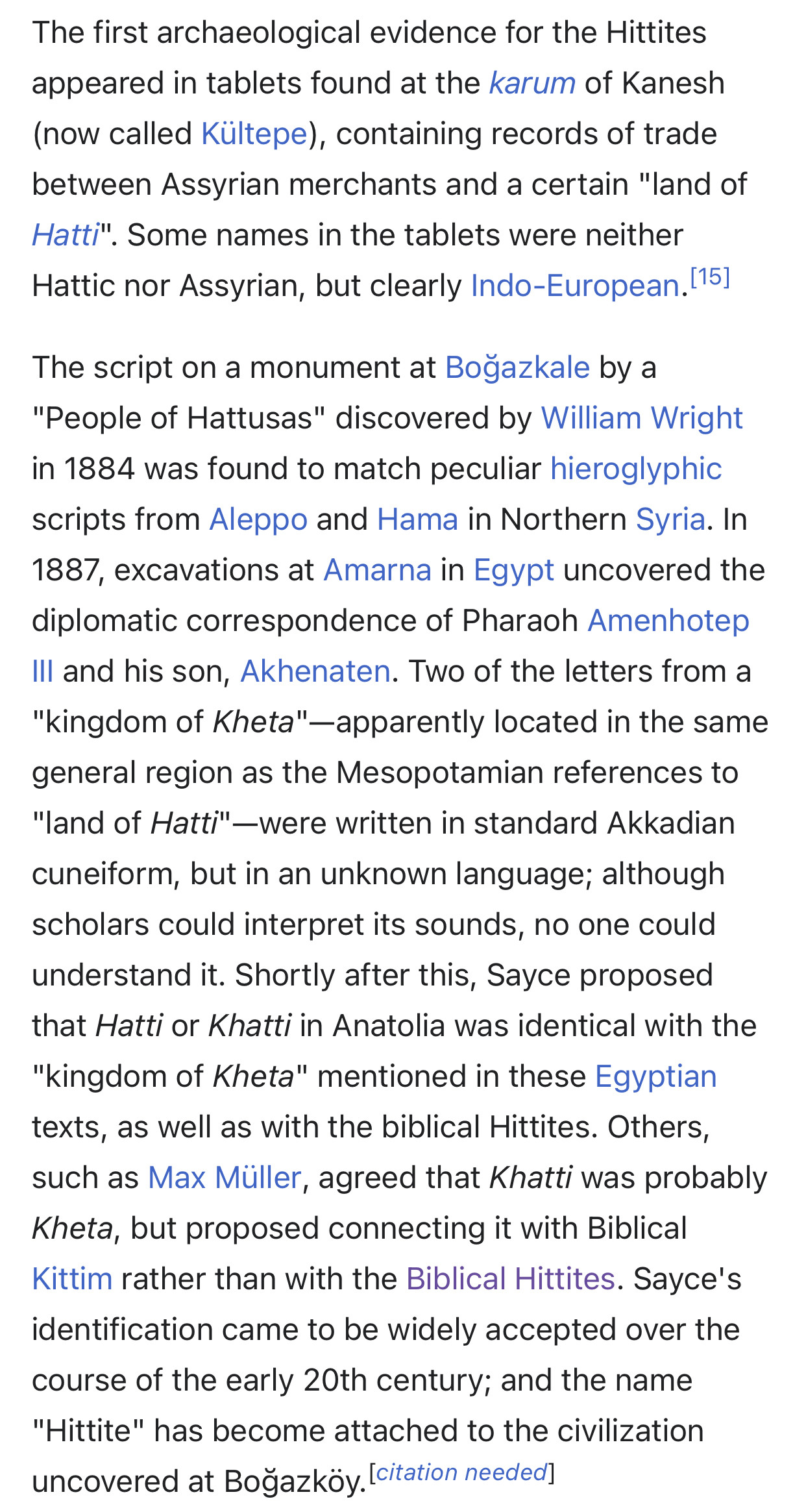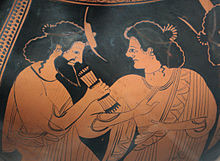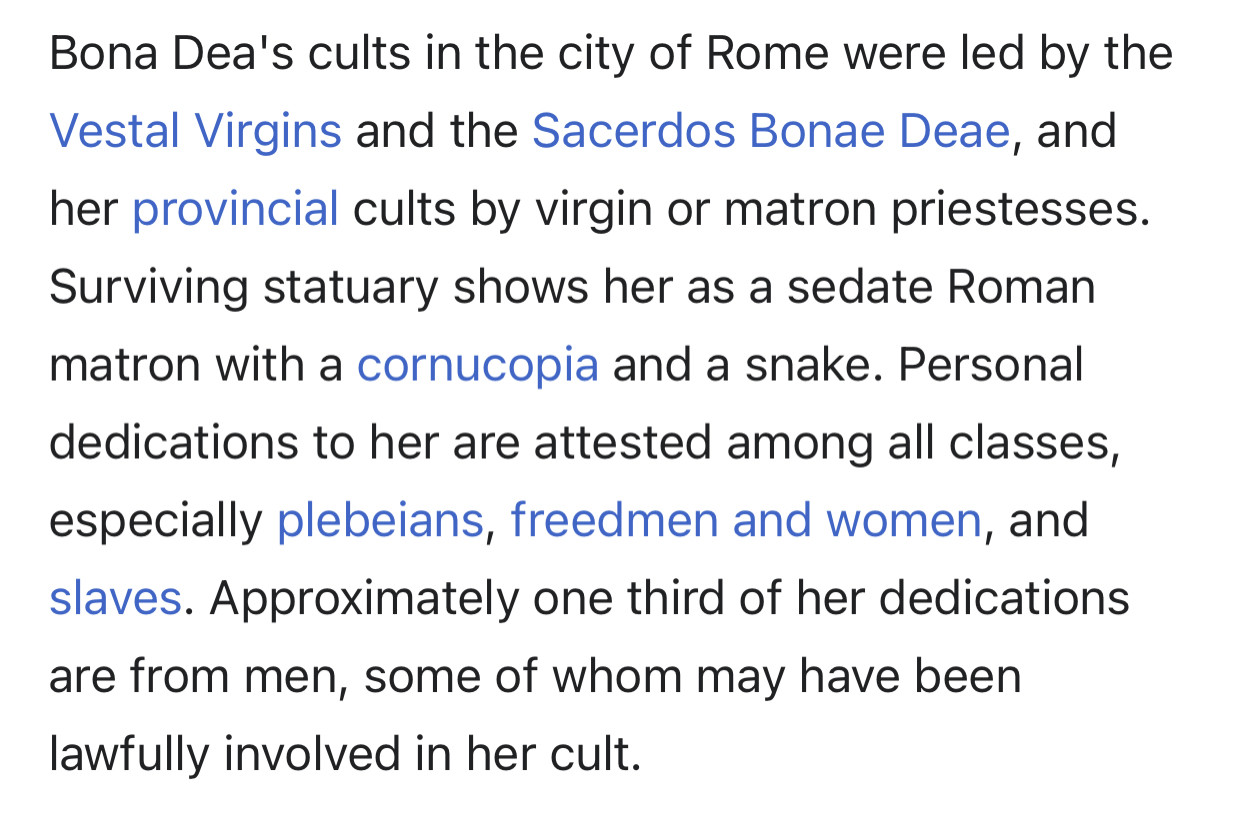The Mac
@TheMac
29 June, 05:11
Sargon of Akkad (/ˈsɑːrɡɒn/; Akkadian: 𒊬𒊒𒄀 Šar-ru-gi),[3] also known as Sargon the Great,[4] was the first ruler of the Akkadian Empire, known for his conquests of the Sumerian city-states in the 24th to 23rd centuries BC.[2] He is sometimes identified as the first person in recorded history to rule over an empire.
Understanding of the Akkadian Empire continues to be hampered by the fact that its capital Akkad has not yet been located, despite numerous attempts.[17][18] Precise dating of archaeological sites is hindered by the fact that there are no clear distinctions between artifact assemblages thought to stem from the preceding Early Dynastic period, and those thought to be Akkadian. Likewise, material that is thought to be Akkadian continues to be in use into the Ur III period.
Understanding of the Akkadian Empire continues to be hampered by the fact that its capital Akkad has not yet been located, despite numerous attempts.[17][18] Precise dating of archaeological sites is hindered by the fact that there are no clear distinctions between artifact assemblages thought to stem from the preceding Early Dynastic period, and those thought to be Akkadian. Likewise, material that is thought to be Akkadian continues to be in use into the Ur III period.
Notice: Undefined index: tg1tga_access in /home/admin/www/anonup.com/themes/default/apps/timeline/post.phtml on line 396
The Mac
@TheMac
29 June, 05:13
In response The Mac to his Publication
The Bible refers to Akkad in Genesis 10:10–12, which states:
"The beginning of his [Nimrod's] kingdom was Babel, and Erech, and Accad, and Calneh, in the land of Shinar. Out of that land he went forth into Assyria, and builded Nineveh, and Rehoboth-Ir, and Calah, and Resen between Nineveh and Calah (the same is the great city)."
"The beginning of his [Nimrod's] kingdom was Babel, and Erech, and Accad, and Calneh, in the land of Shinar. Out of that land he went forth into Assyria, and builded Nineveh, and Rehoboth-Ir, and Calah, and Resen between Nineveh and Calah (the same is the great city)."
Notice: Undefined index: tg1tga_access in /home/admin/www/anonup.com/themes/default/apps/timeline/post.phtml on line 396
The Mac
@TheMac
29 June, 05:15
In response The Mac to his Publication
Notice: Undefined index: tg1tga_access in /home/admin/www/anonup.com/themes/default/apps/timeline/post.phtml on line 396
The Mac
@TheMac
29 June, 05:17
In response The Mac to his Publication
The Tower of Babel (Hebrew: מִגְדַּל בָּבֶל, Migdal Bavel) narrative in Genesis 11:1–9 is an origin myth meant to explain why the world's peoples speak different languages.
Notice: Undefined index: tg1tga_access in /home/admin/www/anonup.com/themes/default/apps/timeline/post.phtml on line 396
The Mac
@TheMac
29 June, 05:19
In response The Mac to his Publication
Notice: Undefined index: tg1tga_access in /home/admin/www/anonup.com/themes/default/apps/timeline/post.phtml on line 396
The Mac
@TheMac
29 June, 05:36
In response The Mac to his Publication
Damnatio memoriae is a modern Latin phrase meaning "condemnation of memory", indicating that a person is to be excluded from official accounts. There are and have been many routes to damnatio memoriae, including the destruction of depictions, the removal of names from inscriptions and documents, and even large-scale rewritings of history. The term can be applied to other instances of official scrubbing; the practice is seen as long ago as the aftermath of the reign of the Egyptian Pharaohs Akhenaten in the 13th century BC, and Hatshepsut in the 14th century BC.
Notice: Undefined index: tg1tga_access in /home/admin/www/anonup.com/themes/default/apps/timeline/post.phtml on line 396
The Mac
@TheMac
29 June, 05:42
In response The Mac to his Publication
Notice: Undefined index: tg1tga_access in /home/admin/www/anonup.com/themes/default/apps/timeline/post.phtml on line 396
The Mac
@TheMac
29 June, 05:43
In response The Mac to his Publication
Notice: Undefined index: tg1tga_access in /home/admin/www/anonup.com/themes/default/apps/timeline/post.phtml on line 396
The Mac
@TheMac
29 June, 05:43
In response The Mac to his Publication
Notice: Undefined index: tg1tga_access in /home/admin/www/anonup.com/themes/default/apps/timeline/post.phtml on line 396
The Mac
@TheMac
29 June, 05:45
In response The Mac to his Publication
Notice: Undefined index: tg1tga_access in /home/admin/www/anonup.com/themes/default/apps/timeline/post.phtml on line 396
The Mac
@TheMac
29 June, 05:47
In response The Mac to his Publication
Tiaa or Tia'a (Ancient Egyptian: 𓍘𓉼𓁗 tjꜥꜣ) was an ancient Egyptian queen consort during the Eighteenth Dynasty of Egypt. She was the a "faceless concubine" during the time of Amenhotep II who withheld from her the title Great Royal Wife, but when her son Thutmose IV became pharaoh, he performed a revision of her status and gave her that title.[1][2]
Notice: Undefined index: tg1tga_access in /home/admin/www/anonup.com/themes/default/apps/timeline/post.phtml on line 396
The Mac
@TheMac
29 June, 05:49
In response The Mac to his Publication
Notice: Undefined index: tg1tga_access in /home/admin/www/anonup.com/themes/default/apps/timeline/post.phtml on line 396
The Mac
@TheMac
29 June, 05:53
In response The Mac to his Publication
Notice: Undefined index: tg1tga_access in /home/admin/www/anonup.com/themes/default/apps/timeline/post.phtml on line 396
The Mac
@TheMac
29 June, 05:55
In response The Mac to his Publication
Neithhotep's name is connected to Neith, the goddess of war and hunting. This followed a tradition notably practiced during the first dynasty: many queens (such as Merneith/Meritneith, another possible female pharaoh and descendant of Neithhotep) and princesses (such as Aha-Neith, Her-Neith, Nakht-Neith and Qa'-Neith) also had names referencing the deity.
Notice: Undefined index: tg1tga_access in /home/admin/www/anonup.com/themes/default/apps/timeline/post.phtml on line 396
The Mac
@TheMac
29 June, 05:59
In response The Mac to his Publication
Merneith (also written Merit-neith and Meryt-Neith) was a consort and a regent of Ancient Egypt during the First Dynasty. She may have been a ruler of Egypt in her own right, based on several official records. If this was the case and the earlier royal wife Neithhotep never ruled as an independent regent, Merneith may have been the first female pharaoh and the earliest queen regnant in recorded history. Her rule occurred around 2950 BC[1] for an undetermined period. Merneith’s name means "Beloved by Neith" and her stele contains symbols of that ancient Egyptian deity. She may have been Djer's daughter and was probably Djet's senior royal wife. The former meant that she would have been the great-granddaughter of unified Egypt's first pharaoh, Narmer. She was also the mother of Den,[2] her successor.
Notice: Undefined index: tg1tga_access in /home/admin/www/anonup.com/themes/default/apps/timeline/post.phtml on line 396
The Mac
@TheMac
29 June, 06:02
In response The Mac to his Publication
Ancient Akkadian cylinder seal depicting Inanna, the subject of many of Enheduanna's hymns, resting her foot on the back of a lion, c. 2334–2154 BC
Notice: Undefined index: tg1tga_access in /home/admin/www/anonup.com/themes/default/apps/timeline/post.phtml on line 396
The Mac
@TheMac
29 June, 06:04
In response The Mac to his Publication
Narmer (Ancient Egyptian: nꜥr-mr, meaning "painful," "stinging," "harsh," or "fierce catfish;"[1][2][3] r. c. 3273 – 2987 BC) was an ancient Egyptian pharaoh of the Early Dynastic Period.[4] He was the successor to the Protodynastic king Ka. Many scholars consider him the unifier of Egypt and founder of the First Dynasty, and in turn the first king of a unified Egypt. A majority of Egyptologists believe that Narmer was the same person as Menes.[a][6][7][8]
Notice: Undefined index: tg1tga_access in /home/admin/www/anonup.com/themes/default/apps/timeline/post.phtml on line 396
The Mac
@TheMac
29 June, 06:36
In response The Mac to his Publication
Notice: Undefined index: tg1tga_access in /home/admin/www/anonup.com/themes/default/apps/timeline/post.phtml on line 396
The Mac
@TheMac
29 June, 07:05
In response The Mac to his Publication
Dakhamunzu (sometimes Dahamunzu) is the name of an Egyptian queen known from the Hittite annals The Deeds of Suppiluliuma, which were composed by Suppiluliuma I's son Mursili II. The identity of this queen has not yet been established with any degree of certainty and Dakhamunzu has variously been identified as either Nefertiti, Meritaten or Ankhesenamen. The identification of this queen is of importance both for Egyptian chronology and for the reconstruction of events during the late Eighteenth Dynasty.
Notice: Undefined index: tg1tga_access in /home/admin/www/anonup.com/themes/default/apps/timeline/post.phtml on line 396
The Mac
@TheMac
29 June, 07:29
In response The Mac to his Publication
Narmer's identity is the subject of ongoing debates, although the dominant opinion among Egyptologists identifies Narmer with the pharaoh Menes, who is renowned in the ancient Egyptian written records as the first king, and the unifier of Ancient Egypt. Narmer's identification with Menes is based on the Narmer Palette (which shows Narmer as the unifier of Egypt) and the two necropolis seals from the Umm el-Qa'ab cemetery of Abydos that show him as the first king of the First Dynasty.
The date commonly given for the beginning of Narmer's reign is c. 3100 BC.[14][15] Other mainstream estimates, using both the historical method and radiocarbon dating, are in the range c. 3273–2987 BC.
The date commonly given for the beginning of Narmer's reign is c. 3100 BC.[14][15] Other mainstream estimates, using both the historical method and radiocarbon dating, are in the range c. 3273–2987 BC.
Notice: Undefined index: tg1tga_access in /home/admin/www/anonup.com/themes/default/apps/timeline/post.phtml on line 396
The Mac
@TheMac
29 June, 07:32
In response The Mac to his Publication
The commonly-used name Menes derives from Manetho, an Egyptian historian and priest who lived during the pre-Coptic period of the Ptolemaic Kingdom. Manetho noted the name in Greek as Μήνης (transliterated: Mênês).[5][11] An alternative Greek form, Μιν (transliterated: Min), was cited by the fifth-century-BC historian Herodotus,[12] but is a variant no longer accepted; it appears to have been the result of contamination from the name of the god Min.[13]
Notice: Undefined index: tg1tga_access in /home/admin/www/anonup.com/themes/default/apps/timeline/post.phtml on line 396
The Mac
@TheMac
29 June, 07:37
In response The Mac to his Publication
Minoan civilization, Bronze Age civilization of Crete that flourished from about 3000 BCE to about 1100 BCE. Its name derives from Minos, either a dynastic title or the name of a particular ruler of Crete who has a place in Greek legend.
Notice: Undefined index: tg1tga_access in /home/admin/www/anonup.com/themes/default/apps/timeline/post.phtml on line 396
The Mac
@TheMac
29 June, 07:39
In response The Mac to his Publication
In light of excavations in Crete, many scholars consider that Minos was a royal or dynastic title for the priestly rulers of Bronze Age, or Minoan, Knossos.
Notice: Undefined index: tg1tga_access in /home/admin/www/anonup.com/themes/default/apps/timeline/post.phtml on line 396
The Mac
@TheMac
29 June, 07:40
In response The Mac to his Publication
Notice: Undefined index: tg1tga_access in /home/admin/www/anonup.com/themes/default/apps/timeline/post.phtml on line 396
The Mac
@TheMac
29 June, 07:41
In response The Mac to his Publication
Crete (Greek: Κρήτη, Modern: Kríti, Ancient: Krḗtē, [krέːtεː]) is the largest and most populous of the Greek islands, the 88th largest island in the world and the fifth largest island in the Mediterranean Sea, after Sicily, Sardinia, Cyprus, and Corsica. It bounds the southern border of the Aegean Sea. Crete rests approximately 160 km (99 mi) south of the Greek mainland. It has an area of 8,336 km2 (3,219 sq mi) and a coastline of 1,046 km (650 mi).
Notice: Undefined index: tg1tga_access in /home/admin/www/anonup.com/themes/default/apps/timeline/post.phtml on line 396
The Mac
@TheMac
29 June, 07:44
In response The Mac to his Publication
Notice: Undefined index: tg1tga_access in /home/admin/www/anonup.com/themes/default/apps/timeline/post.phtml on line 396
The Mac
@TheMac
29 June, 07:47
In response The Mac to his Publication
Notice: Undefined index: tg1tga_access in /home/admin/www/anonup.com/themes/default/apps/timeline/post.phtml on line 396
The Mac
@TheMac
29 June, 07:49
In response The Mac to his Publication
Notice: Undefined index: tg1tga_access in /home/admin/www/anonup.com/themes/default/apps/timeline/post.phtml on line 396
The Mac
@TheMac
29 June, 07:51
In response The Mac to his Publication
Founded
6th millennium BC
Abandoned
c. 1200 BC
Bronze Age
Cultures
Hittite
6th millennium BC
Abandoned
c. 1200 BC
Bronze Age
Cultures
Hittite
Notice: Undefined index: tg1tga_access in /home/admin/www/anonup.com/themes/default/apps/timeline/post.phtml on line 396
The Mac
@TheMac
29 June, 07:53
In response The Mac to his Publication
The origin of the name Magog is unclear. It may come from the Akkadian mat Gugi, "land of Gog", that is, the land of Gyges: Lydia.
Notice: Undefined index: tg1tga_access in /home/admin/www/anonup.com/themes/default/apps/timeline/post.phtml on line 396
The Mac
@TheMac
29 June, 07:56
In response The Mac to his Publication
Notice: Undefined index: tg1tga_access in /home/admin/www/anonup.com/themes/default/apps/timeline/post.phtml on line 396
The Mac
@TheMac
29 June, 08:01
In response The Mac to his Publication
Iry-Hor (or Ro[2]) was a predynastic pharaoh of Upper Egypt during the 32nd century BC.[1] Excavations at Abydos in the 1980s and 1990s[3][4][5] and the discovery in 2012 of an inscription of Iry-Hor in the Sinai confirmed his existence.[1] Iry-Hor is the earliest ruler of Egypt known by name and is sometimes cited as the earliest-living historical person known by name
Notice: Undefined index: tg1tga_access in /home/admin/www/anonup.com/themes/default/apps/timeline/post.phtml on line 396
The Mac
@TheMac
29 June, 10:49
In response The Mac to his Publication
Homer interchangeably used the ethnonyms Achaeans, Danaans, and Argives to refer to the besiegers,[18] and these names appear to have passed down from the time they were in use to the time when Homer applied them as collective terms in his Iliad.
Notice: Undefined index: tg1tga_access in /home/admin/www/anonup.com/themes/default/apps/timeline/post.phtml on line 396
The Mac
@TheMac
29 June, 10:50
In response The Mac to his Publication
Egyptian records mention a T(D)-n-j or Danaya (Tanaju) land for the first time c. 1437 BC, during the reign of Pharaoh Thutmoses III (r. 1479–1425 BC). This land is geographically defined in an inscription from the reign of Amenhotep III (r. circa 1390–1352 BC), where a number of Danaya cities are mentioned, which cover the largest part of southern mainland Greece.[22] Among them, cities such as Mycenae, Nauplion, and Thebes have been identified with certainty. Danaya has been equated with the ethnonym Danaoi (Greek: Δαναοί), the name of the mythical dynasty that ruled in the region of Argos, also used as an ethnonym for the Greek people by Homer.
Notice: Undefined index: tg1tga_access in /home/admin/www/anonup.com/themes/default/apps/timeline/post.phtml on line 396
The Mac
@TheMac
29 June, 10:51
In response The Mac to his Publication
The Tuath(a) Dé Danann (Irish: [t̪ˠuəhə dʲeː d̪ˠan̪ˠən̪ˠ], meaning "the folk of the goddess Danu"), also known by the earlier name Tuath Dé ("tribe of the gods"),[1] are a supernatural race in Irish mythology. They are thought to represent the main deities of pre-Christian Gaelic Ireland.[1] The Tuatha Dé Danann constitute a pantheon whose attributes appeared in a number of forms throughout the Celtic world.
Notice: Undefined index: tg1tga_access in /home/admin/www/anonup.com/themes/default/apps/timeline/post.phtml on line 396
The Mac
@TheMac
29 June, 10:54
In response The Mac to his Publication
Arcadia (Greek: Ἀρκαδία) is a region in the central Peloponnese. It takes its name from the mythological character Arcas, and in Greek mythology it was the home of the god Pan. In European Renaissance arts, Arcadia was celebrated as an unspoiled, harmonious wilderness; as such, it was referenced in popular culture.
Notice: Undefined index: tg1tga_access in /home/admin/www/anonup.com/themes/default/apps/timeline/post.phtml on line 396
The Mac
@TheMac
29 June, 10:56
In response The Mac to his Publication
Hera became jealous, and in anger, she transformed Callisto into a bear. She would have done the same or worse to her son, but Zeus hid Arcas in an area of Greece, which would come to be called Arcadia, in his honor. Arcas was given into a care of one of the Pleiades, Maia.
Notice: Undefined index: tg1tga_access in /home/admin/www/anonup.com/themes/default/apps/timeline/post.phtml on line 396
The Mac
@TheMac
29 June, 10:58
In response The Mac to his Publication
Maia (/ˈmeɪ.ə/; Ancient Greek: Μαῖα; Latin: Maia),[1] in ancient Greek religion, is one of the Pleiades and the mother of Hermes by Zeus.[2]
Maia is the daughter of Atlas[3] and Pleione the Oceanid,[4] and is the oldest of the seven Pleiades.[5] They were born on Mount Cyllene in Arcadia,[4] and are sometimes called mountain nymphs, oreads; Simonides of Ceos sang of "mountain Maia" (Maiados oureias) "of the lovely black eyes."[5] Because they were daughters of Atlas, they were also called the Atlantides.
Hermes and Maia, detail from an Attic red-figure amphora (c. 500 BC)
Maia is the daughter of Atlas[3] and Pleione the Oceanid,[4] and is the oldest of the seven Pleiades.[5] They were born on Mount Cyllene in Arcadia,[4] and are sometimes called mountain nymphs, oreads; Simonides of Ceos sang of "mountain Maia" (Maiados oureias) "of the lovely black eyes."[5] Because they were daughters of Atlas, they were also called the Atlantides.
Hermes and Maia, detail from an Attic red-figure amphora (c. 500 BC)
Notice: Undefined index: tg1tga_access in /home/admin/www/anonup.com/themes/default/apps/timeline/post.phtml on line 396
The Mac
@TheMac
29 June, 11:04
In response The Mac to his Publication
Arcas is the eponym of Arcadia, where Maia was born.[4] The story of Callisto and Arcas, like that of the Pleiades, is an aition for a stellar formation, the constellations Ursa Major and Ursa Minor, the Great and Little Bear.
Her name is related to μαῖα (maia), an honorific term for older women related to μήτηρ (mētēr) 'mother',[citation needed] also meaning "midwife" in Greek.
Her name is related to μαῖα (maia), an honorific term for older women related to μήτηρ (mētēr) 'mother',[citation needed] also meaning "midwife" in Greek.
Notice: Undefined index: tg1tga_access in /home/admin/www/anonup.com/themes/default/apps/timeline/post.phtml on line 396
The Mac
@TheMac
29 June, 11:06
In response The Mac to his Publication
In ancient Roman religion and myth, Maia embodied the concept of growth,[10] as her name was thought to be related to the comparative adjective maius, maior "larger, greater". Originally, she may have been a homonym independent of the Greek Maia, whose myths she absorbed through the Hellenization of Latin literature and culture.
Notice: Undefined index: tg1tga_access in /home/admin/www/anonup.com/themes/default/apps/timeline/post.phtml on line 396
The Mac
@TheMac
29 June, 11:07
In response The Mac to his Publication
In an archaic Roman prayer,[12] Maia appears as an attribute of Vulcan, in an invocational list of male deities paired with female abstractions representing some aspect of their functionality. She was explicitly identified with Earth (Terra, the Roman counterpart of Gaia) and the Good Goddess (Bona Dea) in at least one tradition.[13][14] Her identity became theologically intertwined also with the goddesses Fauna, Ops, Juno, Carna, and the Magna Mater ("Great Goddess", referring to the Roman form of Cybele but also a cult title for Maia), as discussed at some length by the late antiquarian writer Macrobius.[15] This treatment was probably influencedby the 1st-century BC scholar Varro, who tended to resolve a great number of goddesses into one original "Terra".[14] The association with Juno, whose Etruscan counterpart was Uni, is suggested again by the inscription Uni Mae on the Piacenza Liver.[16]
Notice: Undefined index: tg1tga_access in /home/admin/www/anonup.com/themes/default/apps/timeline/post.phtml on line 396
The Mac
@TheMac
29 June, 11:08
In response The Mac to his Publication
The month of May (Latin Maius) was supposedly named for Maia, though ancient etymologists also connected it to the maiores "ancestors", again from the adjective maius, maior, meaning those who are "greater" in terms of generational precedence. On the first day of May, the Lares Praestites were honored as protectors of the city,[17] and the flamen of Vulcan sacrificed a pregnant sow to Maia, a customary offering to an earth goddess[18] that reiterates the link between Vulcan and Maia in the archaic prayer formula. In Roman myth, Mercury (Hermes), the son of Maia, was the father of the twin Lares, a genealogy that sheds light on the collocation of ceremonies on the Kalends of May.[19] On May 15, the Ides, Mercury was honored as a patron of merchants and increaser of profit (through an etymological connection with merx, merces, "goods, merchandise"), another possible connection with Maia his mother as a goddess who promoted growth.
Notice: Undefined index: tg1tga_access in /home/admin/www/anonup.com/themes/default/apps/timeline/post.phtml on line 396
Bona Dea (Latin: [ˈbɔna ˈdɛ.a]; 'Good Goddess') was a goddess in ancient Roman religion. She was associated with chastity[1][2] and fertility in Roman women, healing, and the protection of the state and people of Rome. According to Roman literary sources, she was brought from Magna Graecia at some time during the early or middle Republic, and was given her own state cult on the Aventine Hill.
Goddess of chastity and fertility in women, healing, and the protection of the state and people
Goddess of chastity and fertility in women, healing, and the protection of the state and people
11:11 AM - Jun 29, 2021
In response The Mac to his Publication
Only people mentioned by TheMac in this post can reply
The Mac
@TheMac
29 June, 11:21
In response The Mac to his Publication
Notice: Undefined index: tg1tga_access in /home/admin/www/anonup.com/themes/default/apps/timeline/post.phtml on line 396
The Mac
@TheMac
29 June, 11:22
In response The Mac to his Publication
Notice: Undefined index: tg1tga_access in /home/admin/www/anonup.com/themes/default/apps/timeline/post.phtml on line 396

